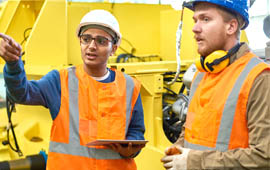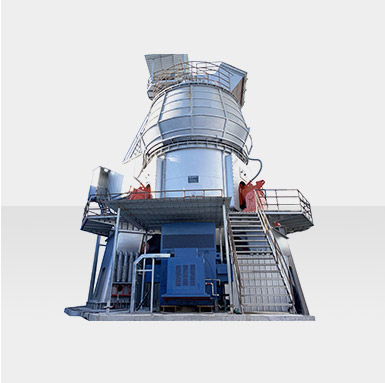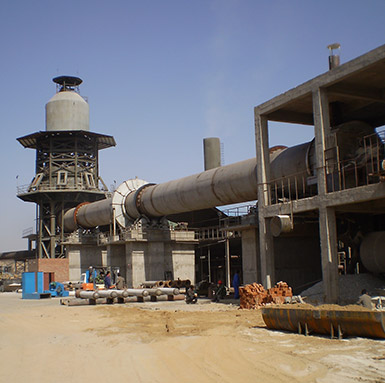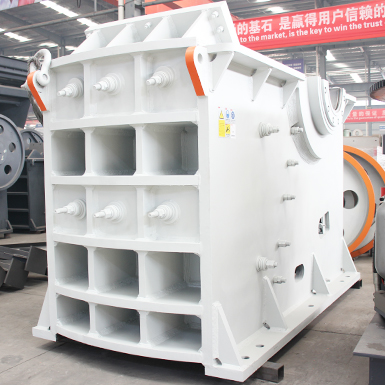Lime is the most important auxiliary raw material in steelmaking production, and its quality directly affects the slagging speed, energy consumption and slag reaction performance in the steelmaking process and refining stage, that is, the ability of dephosphorization and desulphurization. Lime with high activity, stable composition and less impurities must be used in the steelmaking process. The activity of lime is the most important performance index of lime for steelmaking. There are two forms of effective calcium oxide and binding calcium oxide in the mineral composition of lime, in which effective calcium oxide can be divided into active calcium oxide and inactive calcium oxide, and the activity of lime mainly depends on the content of active effective calcium oxide. The calcination of limestone (CaCO) is a process of recrystallization of limestone rhombic lattice into cubic lattice of lime. The crystal structure obtained by the change is related to the rate of the formation of new phase crystal nucleus and its growth rate. When the formation rate of the new phase crystal nucleus is greater than its growth rate, the obtained crystal is fine-grained crystal with a large number of active calcium oxide molecules and high activity; on the contrary, the coarse-grained crystal with low surface energy and a small number of active calcium oxide molecules are obtained. It can be seen that under the condition of rapid heating and calcination of limestone, the lime with open structure of fine crystal is obtained, and the activity is high, while when heated and calcined slowly, the lime with dense structure of coarse crystal is obtained, and the activity is low.
.jpg)
Rotary kiln system.
The main equipment of the rotary kiln system (see figure 1) includes fuel preheating chamber, rotary kiln, lime cooler, raw material preheater, dust collector, etc. The technological process is as follows: the gas (CO) is preheated to a certain temperature, enters the rotary kiln and mixed with combustion air, so that the limestone that has been heated to a certain temperature in the raw material preheater reaches the calcination temperature, and the limestone is heated uniformly through the rotary kiln. Thus decompose into active lime, and finally enter the cooler to cool down. The waste gas produced in this process is pumped into the dust collector under negative pressure through the fan at the end of the system, which is discharged after dust removal, cooling and other processes. The above is the general process of the rotary kiln system.
Effect of calcination temperature and holding time on the activity of lime.
When the limestone is heated to the decomposition temperature, the following reaction occurs: CaCO3_+CaO+CO2.
This reaction is endothermic, and endothermic 422kcal is needed to decompose 1kg CaCO3. Firstly, CaCO3 particles are destroyed and decomposed, accompanied by recrystallization and crystal growth of CaO. When the decomposition reaction occurs, due to the production of carbon dioxide, the CaO crystal will form a sparse structure and retain the polycrystalline structure. At this time, the crystal is not fully developed and there are a large number of voids, which makes the activity of lime is maximum. However, with the further increase of calcination temperature or the extension of holding time, the crystal will slowly contract and the voids will be reduced, so that the active calcium oxide will be transformed into non-active oxygen calcium oxide, thus reducing the activity of lime.
When the calcination temperature is low, the temperature gradient is small, and the heat transfer speed to the center is slow. In this case, if the constant temperature time is short, the central part is not easy to reach the CaCO decomposition temperature, thus not burning through the phenomenon, generally known as underfiring, at this time the activity is low. When the temperature is higher, the temperature gradient is large, the central part is easy to reach a higher temperature, CaCO3 decomposes rapidly, but the recrystallization and crystal growth rate of CaO is also slow. In this case, if the constant temperature is too long, it will easily lead to excessive grain size of CaO and reduce the activity of lime, resulting in the formation of overburnt lime. Only with proper calcination temperature and holding time can CaCO3 decomposition, CaO recrystallization and grain growth develop evenly. By changing the calcination temperature and calcination time, the activity of the finished lime was tested: combined with the relevant materials, a group of data were obtained and plotted into a curve (see figure 2). It can be seen from figure 2 that the activity of lime reaches maximum under the condition of calcination temperature of 1160 ℃ and heat preservation 35min.
Effect of impurities and particle size on the quality of lime.
The harmful impurities in limestone are SiO2, AL2O3, P, S and so on. These impurities can react with fired CaO at lower temperature, which promotes the fusion of CaO particles and leads to the coarsening of particles. Moreover, it can also form fusible compounds to block the fine pores on the surface of lime, reduce the ability of lime reaction, and hinder the discharge of CO2 gas, resulting in the central part of limestone can't be decomposed, harmful impurities react with lime, and bond together to form large slag blocks, which worsen the internal condition of lime kiln and seriously reduce the activity of lime. Impurities such as P and S are elements that must be removed in the steelmaking process, and the quality requirements of active lime for steelmaking are: CaO > 85%; P < 0.01%; S < 0.025%. Therefore, we should try to choose limestone with few impurities and high calcium content as raw materials.
The particle size of limestone is also an important factor affecting the quality of fired limestone. The more uniform particle size is, the more uniform heating is. Under the same calcination conditions, the air permeability of formed lime is better, the decomposed CO2 gas is easily discharged, and the decomposition rate of limestone is higher, thus the lower overburning rate is, the higher active component CaO is, and the higher its activity is. Attention should be paid to the particle size, because the decomposition of limestone moves from the surface to the center, with the progress of decomposition, the surface of limestone becomes lime and the thickness is increasing, the diffusion of CO2 gas produced by decomposition is blocked, and it is more difficult to discharge in time, and the decomposition rate of limestone decreases. Therefore, the particle size of limestone directly affects the underfiring and overburnt rate of limestone. It is proved that the effect of limestone raw material whose average particle size is about 30mm is better.
.jpg)



